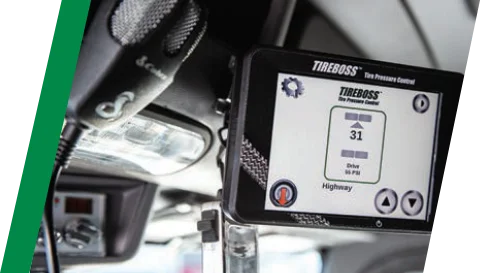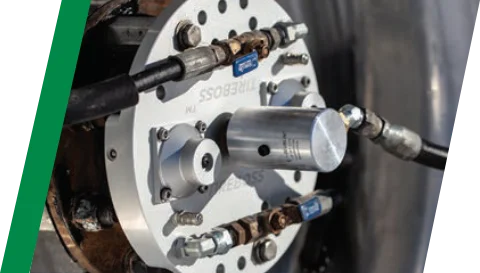




By maintaining proper tire pressure for the operating conditions, tire life will not be compromised. Industry users have realized an increase in tire life of 20-50%. Severe use applications, such as log hauling, have realized more significant savings.
The tires are set at pressures to match the load and speed of the vehicle. High tire pressures are only required when travelling at highway speeds with a full load. When traveling with an empty vehicle or loaded at reduced speeds, you can safely run with less pressure in the tires. The tire pressure is matched to the speed and load.
The system is designed to inflate all of the tires within six to eight minutes when going through the typical stages of re-inflation. This is well within the recommendations set by the tire companies to prevent tire overheating. Air supply requirements are determined by vehicle configuration and the number of tires being controlled. E.g. 3 axle vs. 9 axle.
Pot-hole and wash-board damage to roads result from an empty vehicle bouncing on the road surface. By reducing the tire pressure, creating a softer ride, road surface damage is minimized. In addition, vehicle damage is decreased and the reduced driver bounce results in less driver fatigue and safer operation of the vehicle. Traction, flotation and superior braking ability are some of the benefits of reduced tire pressures.
Pressure settings are derived from the Tire and Rim Association guidelines. Tire manufacturers support these guidelines and the use of tire pressure control systems.
By operating with the correct tire pressure for the load and roads being traveled, a 3% to 4% improvement in fuel economy can be achieved.
The system incorporates heaters on the control valves. It is designed to operate in cold temperatures as experienced in the Canadian winters.
As unusual as the hoses may appear, they are similar to those connected to the brake pots. They have proven to be extremely reliable, durable, and practical. To our knowledge, there has never been any damage to the external hoses on vehicles while travelling on public roads. This technology has been in use on a fleet within the Saskatchewan petroleum industry for over eight years. To date this fleet has accumulated over 12,000,000 km without any damage to the external hoses while travelling on public roads. Even in severe use applications, such as log hauling, the average incidence of damage to the drive axle hardware is estimated at only one per truck per year. The operator is immediately warned by computer of the occurrence and can easily isolate the damage and make repairs.
In a moderate use application, rotary unions will operate between 150,000 – 300,000 miles (250,000 km – 500,000 km) on drive wheels and up to 1,000,000 miles (1,600,000 km) on trailer wheels.
The systems have been used commercially since 1992, mostly in severe use applications such as forestry, concrete, oilfield and construction. The systems are easily transferred and some are on their fourth vehicle. The system is designed for 10+ years of service and is extremely durable.